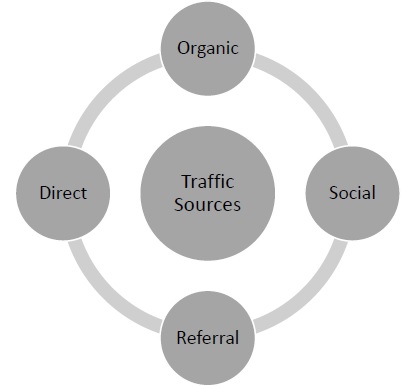
- Web Analytics - Home
- Web Analytics - Introduction
- Web Analytics - Google Analytics
- Web Analytics - Optimizely
- Web Analytics - Kissmetrics
- Web Analytics - Crazy Egg
- Web Analytics - Key Metrics
- Web Analytics - Data Sources
- Web Analytics - Segmentation
- Web Analytics - Dashboards
- Web Analytics - Conversion
- Web Analytics - Emerging Analytics
- Web Analytics - A/B Testing
- Automated Reporting & Annotation
- Actionable Reporting
- Analytics Terminology
Web Analytics - Key Metrics
You need to find a few key metrics for your business. You have a website and it has a tracking code in it. Now, you need to make sure what are you going to measure. Analyzing may help you retain your customer and hold them.
What to Measure
Audience
Pageviews − Pageviews is the number of views of a page. Multiple pageviews are possible in a single session. If pageviews is improved, it will directly influence AdSense revenue and average time on website.
Bounce rate − Bounce rate reflects the percentage of visitors returning back only after visiting one page of your website. It helps you to know how many visitors do so. If the bounce rate of a website increases, its webmaster should be worried.
Pages per session − Pages/session is the number of pages surfed in a single session. For example, a user landed on your website and surfed 3 pages, then the website pages/session is 3.
Demographic info − Demographic data shows Age and Gender. With the help of Demographic Info, you can find the percentage of Male/Female visitors coming to your website. Analyzing the ratio of this data, you can make a strategy according to genders. Age group data help you find what percentage of age group visiting your website. So, you can make a strategy for highest percentage of age group visitors.
Devices − This data shows the devices info. In devices info, you can easily find how many percentage of visitors come from mobile, how many come from desktop, how many come from tablets, etc. If mobile traffic is high, then you need to make your website responsive.
Acquisition
Traffic sources − In the acquisition, you have to check all your sources of the traffic. Major sources of the traffic are −
Organic traffic is the traffic coming through all search engines (Google, Yahoo, Bing....)
Social traffic is the traffic coming through all social media platforms (like − Facebook, Twitter, Google+, ...)
Referral traffic is the traffic coming through where your website is linked.
Direct traffic is the traffic coming directly to your website. For example, typing the url of your website, clicking on the link of your website given in emails, etc.

Source/Medium − This metrics gives you an idea of the sources from where you are getting traffic (Google, Yahoo, Bing, Direct, Facebook...).
Site Content
Landing pages − Landing pages are the pages where the visitors land first (normally, home pages of the websites are the landing pages). With the help of this metrics, you can find the top pages of the website. Using this metrics, you can analyze how many pages are getting 50% or more traffic of the website. So, you can easily find which type of content is working for you. Further, based on this analysis, you can plan the next content strategy.
Site speed − Site speed is the metrics used for checking page timing (average page load time). Using this metrics, you can find which page is taking more time to load, how many pages have high load time, etc.